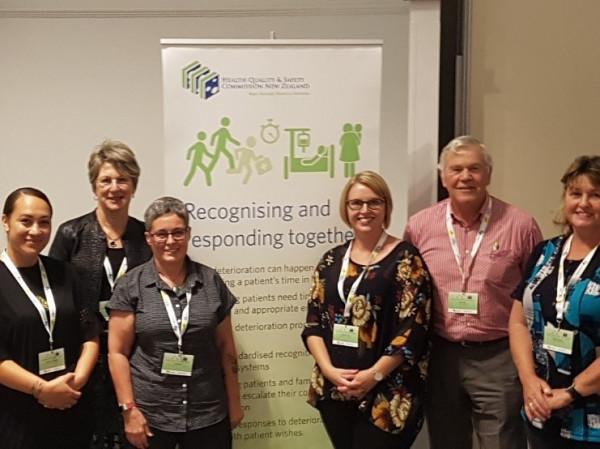Blog: Consumer reflections from the Patient deterioration NZ conference

Sheila Beckers is a consumer representative from Capital & Coast District Health Board’s kōrero mai project team. Kōrero mai is a Commission initiative which supports district health boards (DHBs) and consumers to co-design a patient and family/whānau escalation process for when a patient deteriorates in hospital. She shares her thoughts and experiences from the patient deterioration conference she attended in November 2018. The conference was co-hosted by the Health Quality & Safety Commission and the Australian and New Zealand Intensive Care Society.
The conference started with Matt’s story. Matt was 15 when he died after what should have been a standard appendectomy. But staff missed signs that he was deteriorating.
We heard multiple reasons about how tragic events like this can happen, including:
- staff normalising the abnormal: reassuring patients when they have concerns rather than listening and applying critical thinking skills
- staff not knowing the difference between people who have an irreversible condition and are dying, and sick people who have a reversible condition that can be aggressively treated
- siloed care: surgeons, duty doctors, nursing staff, allied health staff – all experts in their own field but not across all the patient’s needs or problems
- reduced staffing at night, but the same number of patients.
I found Matt’s story incredibly moving, and felt the same about the experience of Marama Tauranga, whose teenage son suffered peritonitis. I think these stories should be told in every medical and nursing training programme, and in all DHB professional development workshops.
At this conference – as a consumer from outside the health community – I was initially way out of my comfort zone. Thank you to those sitting around me who translated acronyms and explained clinical information I didn’t understand!
But the key message in all presentations was that deteriorating patients and their loved ones matter. And that the Commission has used robust research and planning to implement their programme to reduce harm, and improve outcomes for deteriorating patients in New Zealand hospitals.
Research shows that there has been progress. Using resources and initiatives such as the New Zealand early warning score and patient at-risk teams nearer the ‘top of the cliff’ means less harm to patients.
Multiple staffing shifts every 24 hours and poor communication at handovers reduces continuity of care and the baseline of a patient’s wellbeing gets lost. But patients and whānau know that baseline through being present over time, and notice signs that staff miss. The kōrero mai project will give patients and their whānau throughout the country a clear pathway to escalate their concerns and seek the help they need.
Communication is key. Listening as well as talking. It is important for staff to allow time for the concerns and questions from patients and their loved ones to be expressed and answered in a way they understand.
Some deteriorating patients are dying – tough decisions may need to be made. Communicating compassionately and being respectful of patient and whānau values and preferences can help ease the trauma for those who are at their most vulnerable.
I now understand the need for the Commission’s national patient deterioration programme, which seeks to improve the way hospitals recognise and respond to deteriorating patients throughout New Zealand. And I see the bigger patient safety picture within which the kōrero mai project is embedded. Although a national and formalised process takes much longer to complete than local initiatives, each DHB can modify the framework, in consultation with local consumers, to best meet their own community needs and values.
But ultimately the patient deterioration programme ensures all DHBs are accountable to the same nationwide standards for improving safety, reducing harm, and improving outcomes, when adult patients in their hospital get worse.
Find out more about the Commission’s patient deterioration programme, watch Matt’s story or read Sheila's full conference report.
Author: Sheila Beckers
